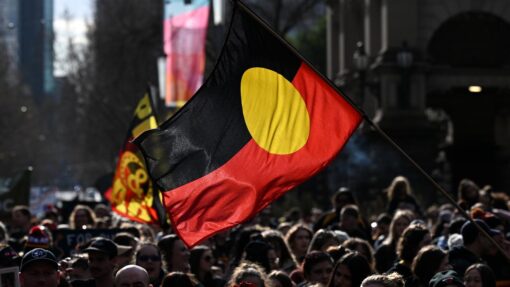Funding to assist more violence survivors
Maeve Bannister |
Reducing Australia’s epidemic rates of domestic violence is a priority for the federal government as it commits more funding for women and children fleeing violent homes.
But the Greens say demand will still not be met by the extra funding and the announcement is another example of the government’s big words and small actions.
Social Services Minister Amanda Rishworth announced $100 million to fund an extra 720 safe places for women and children fleeing violence.
The places will be inclusive, accessible and specific to the needs of First Nations women, those from culturally and linguistically diverse backgrounds and women living with a disability.
Yet with more than 50,000 people on the social housing waitlist in Queensland alone, Greens senator Larissa Waters said the announcement was a “drop in the ocean”.
“The housing crisis is felt even more acutely by women and children experiencing family and domestic violence,” she said.
“Women are forced to choose between abuse or homelessness because there is nowhere to go.”
Ms Rishworth said the funding is part of the $1.7 billion budget allocation over six years for measures to address high rates of gender-based violence, which she called a “national shame”.
“This will improve access to appropriate emergency accommodation options for victim-survivors who may have otherwise found it difficult to access,” she said.
“There will be a focus on people that have a greater risk because of racism, ableism or other discrimination.
“We need to be culturally aware (and) make sure our services are fit-for-purpose.”
Senator Waters said women’s safety advocates had called for $1 billion per year to meet demand, but the government’s commitment is a fraction of that at $300 million.
“There needs to be dollars and targets attached to the talk about family, domestic and sexual violence,” she said.
Ms Rishworth acknowledged frontline services were facing critical funding pressure and said there was a role for state and territory governments to assist.
She also announced a national research project on violent perpetrators with the aim to reduce domestic violence rates, increase accountability and reframe community attitudes.
She did not set a time frame for the project but said research institutes had been funded for the next six years as part of the budget measures.
Last month the government unveiled its National Plan to End Violence for 2022 to 2032.
It updates a plan released by former prime minister Julia Gillard in 2010, with a renewed focus on engaging men and boys, creating respectful relationships at all ages and targeting sexual violence.
Ms Rishworth outlined how the government would measure the success of the national plan to end violence within a generation.
Success will be measured by timely and accessible support to people who experience domestic violence and a reduction in the numbers of perpetrators who breach court orders.
It will also be measured by an increase in the number of perpetrators who are held accountable for their actions via the justice system.
“There is more work to be done … we’ve seen in a number of states and territories laws change but we need to make sure the training is there for law enforcement and courts,” she said.
Ms Rishworth announced improved strategies to ensure the progress on reducing violence can be measured.
This will include unifying data across all states and territories and increased collection of domestic violence service feedback, as well as the perpetrator behaviour project.
“Too often, the evidence collection focuses on victim-survivors, not on those who choose to use violence, which is the problem that we must address,” Ms Rishworth said.
1800 RESPECT (1800 737 732)
Lifeline 13 11 14
AAP


